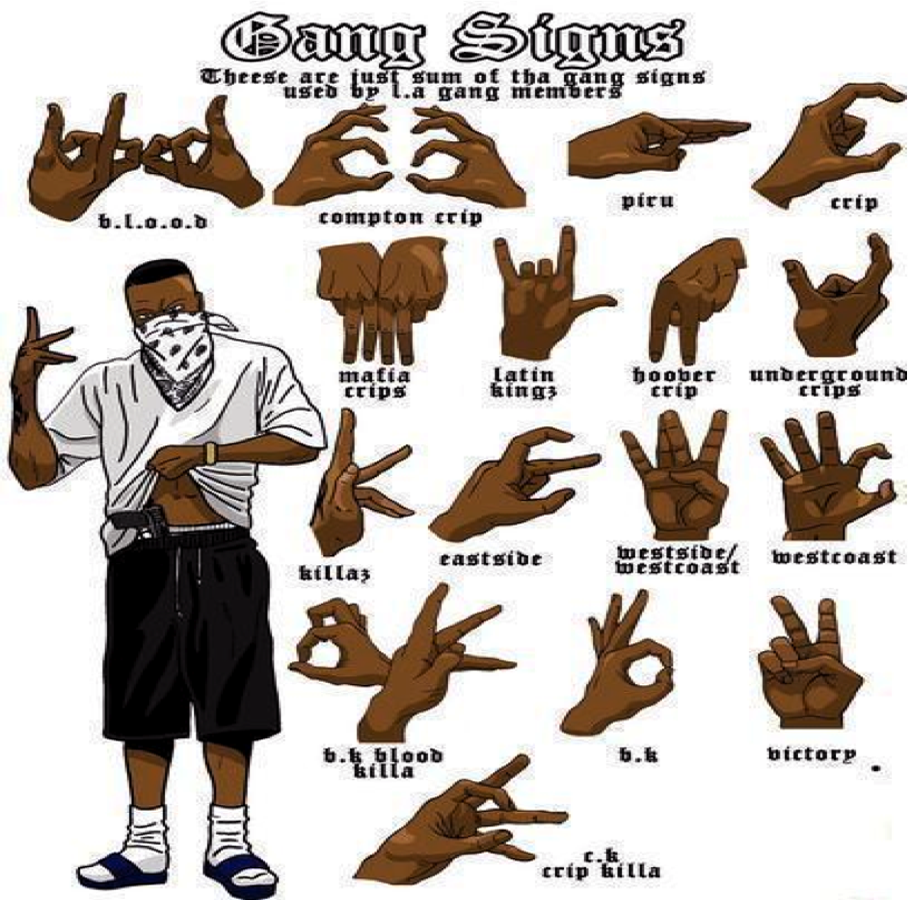In the vibrant tapestry of American street culture, gang signs serve as a unique form of communication, conveying allegiance, identity, and territory. Among the most recognized groups is the Crips, a gang that originated in Los Angeles in the late 1960s. Their use of specific hand gestures, colors, and symbols has made them a significant part of the urban landscape, often reflecting deeper meanings tied to their history and community. Understanding what are the Crip gang signs can provide valuable insight into not just the gang itself, but also the culture and social dynamics of the neighborhoods they inhabit.
As with any form of symbolism, the meanings behind Crip gang signs are multilayered and can vary widely based on context. Symbols that may appear innocuous at first glance can hold significant implications within the gang’s culture. This article aims to demystify what are the Crip gang signs, exploring their origins, meanings, and the social context in which they are used. By shedding light on this subject, we hope to foster a better understanding of the complexities behind gang affiliations and the role sign language plays in these communities.
Moreover, the evolution of gang signs has been influenced by various socio-economic factors, media portrayal, and changes in gang dynamics over the decades. It is crucial to approach this topic with nuance and an understanding of the broader societal issues at play. So, what exactly are the Crip gang signs, and how do they function within the larger framework of gang culture? Let’s delve deeper into this intriguing subject.
What Are the Origins of Crip Gang Signs?
The Crips originated in Los Angeles in the late 1960s, initially formed as a community-based organization aimed at protecting local neighborhoods. Over time, however, they evolved into one of the most infamous gangs in American history. The use of gang signs emerged as a way for members to communicate discreetly without drawing attention from law enforcement or rival gangs.
How Did the Use of Hand Signs Develop?
Hand signs are not merely random gestures; they represent a complex language that conveys various messages. Crip gang signs often include a combination of finger formations and gestures that can indicate a member's affiliation, rank, or even their intentions. These signs are often learned through initiation rituals and are seen as a rite of passage among new members.
What Are Some Common Crip Gang Signs?
While there are numerous signs used within the Crip culture, some of the most commonly recognized include:
- Gang Sign for "C": A simple yet effective formation where members form a 'C' shape with their fingers.
- Two Finger Sign: This sign, made by raising the index and middle fingers, can signify allegiance or a greeting among members.
- Three Pointed Star: Representing the 'Triple O.G.', this sign is often used to show respect for long-standing members.
- Westside Sign: A gesture that signifies pride in the West Coast, often seen during gang-related gatherings.
What Are the Meanings Behind the Signs?
Each Crip gang sign carries its own significance, often tied to the gang's history and its members' identities. For example, the 'C' sign is not just an indication of affiliation but also a representation of the Crip's values and code of conduct. Similarly, the two-finger salute can serve as a greeting or a sign of solidarity among members.
How Do Crip Signs Differ from Other Gang Signs?
While many gangs utilize hand signs, the Crip signs have distinct characteristics that set them apart. For instance, while some gangs may use elaborate symbols or colors, the Crips primarily focus on simple hand gestures that are easily recognizable. This simplicity allows for quick communication in high-stress situations, which is often essential in the gang lifestyle.
What Are the Risks Associated with Displaying Crip Gang Signs?
While some people may view displaying Crip gang signs as a badge of honor, it’s important to understand the risks involved. Displaying these signs can attract unwanted attention from law enforcement or rival gangs, leading to potentially dangerous confrontations. Additionally, individuals who are not part of the gang but display these signs may face repercussions from gang members who perceive them as posers.
What Role Do Crip Gang Signs Play in Modern Culture?
Crip gang signs have transcended their original purpose and have become a part of modern pop culture. From music videos to fashion trends, the imagery associated with the Crips can be seen across various media platforms. This visibility can sometimes glamorize gang culture, leading to a complex relationship between the gang and society at large.
Are There Any Positive Uses of Crip Gang Signs?
Interestingly, some former gang members and community leaders have sought to reclaim the imagery associated with Crips for positive purposes. By using the signs in community outreach and anti-violence campaigns, they aim to shift the narrative around gang culture towards one of redemption and community building. This rebranding effort highlights the possibility of transformation and the potential for positive change.
What Can We Learn from Understanding Crip Gang Signs?
Understanding what are the Crip gang signs is more than just a study of symbols; it’s a window into the social dynamics, struggles, and histories of urban communities. By recognizing the meanings behind these signs, we can better appreciate the complexity of gang culture and the impact it has on individuals and neighborhoods. Moreover, this understanding can foster empathy and pave the way for more effective community engagement and support.
In conclusion, while Crip gang signs may initially appear to be a simple form of communication, they are deeply rooted in a rich culture that reflects the experiences of its members. By educating ourselves about what are the Crip gang signs, we contribute to a more nuanced understanding of the challenges and realities faced by those in gang-affiliated communities. Through this knowledge, we can work towards solutions that promote healing and empowerment.



